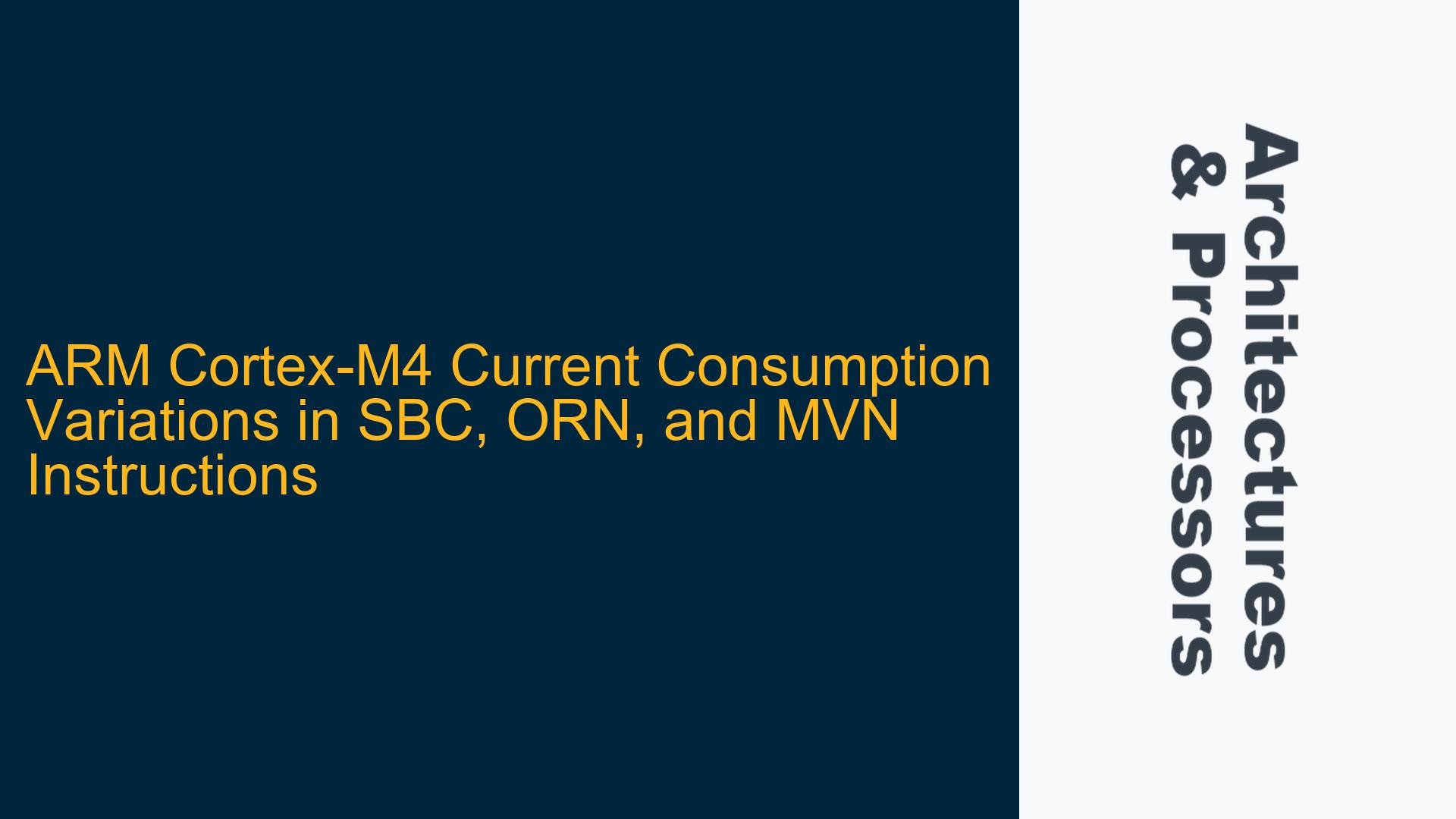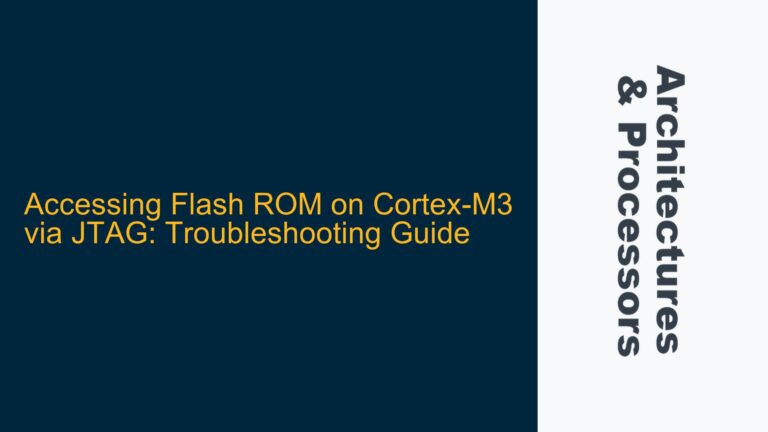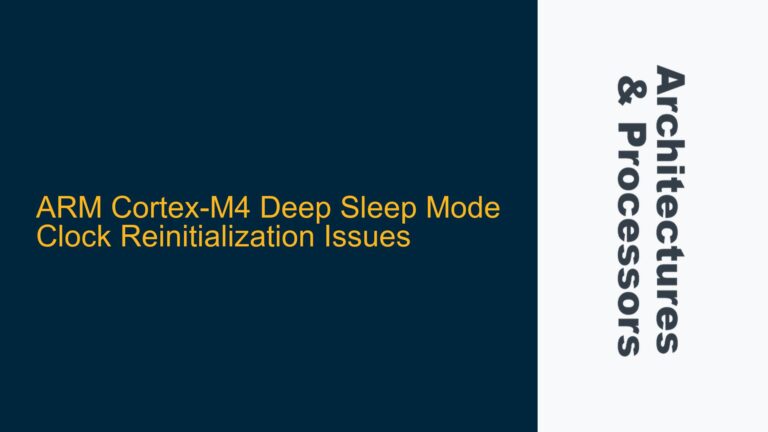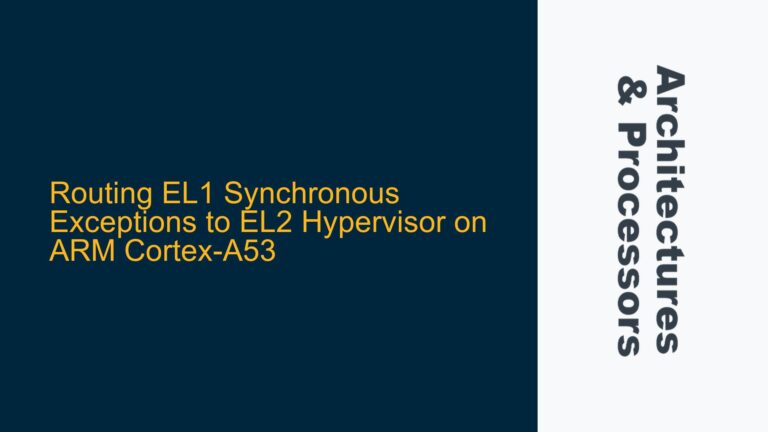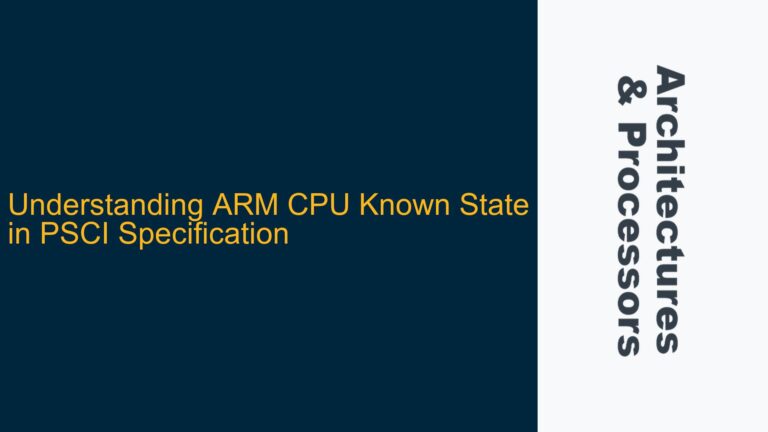ARM Cortex-M4 Current Consumption Variations in SBC, ORN, and MVN Instructions
The ARM Cortex-M4 processor, known for its efficiency and performance in embedded systems, occasionally exhibits unexpected behavior in power consumption when executing specific instructions. One such anomaly involves the Subtract with Carry (SBC), Logical OR NOT (ORN), and Move NOT (MVN) instructions. When these instructions are executed with certain register configurations, a noticeable increase in current consumption is observed compared to other register configurations. This behavior is not observed in other data-processing instructions like ADD or SUB, which raises questions about the underlying causes and potential solutions.
Issue Overview: Current Consumption Differences in SBC, ORN, and MVN Instructions
The core issue revolves around the observation that certain register configurations in the SBC, ORN, and MVN instructions lead to higher current consumption compared to other configurations. For example:
- SBC r11, r7, r11 consumes 3.0217 mA, while SBC r11, r7, r7 consumes 2.7477 mA.
- Similarly, ORN r11, r7, r11 and MVN r11, r11 show higher current consumption compared to their counterparts ORN r11, r7, r7 and MVN r11, r7.
This behavior is unique to these three instructions and is not observed in other data-processing instructions like ADD or SUB, where the current consumption remains consistent regardless of the register configuration. The issue is particularly relevant in low-power embedded systems where power efficiency is critical.
Possible Causes: Data Path Toggling and Instruction-Specific Netlist Implementation
The primary cause of the increased current consumption in the SBC, ORN, and MVN instructions can be attributed to data path toggling and instruction-specific netlist implementation in the ARM Cortex-M4 processor.
Data Path Toggling
When an instruction like SBC r11, r7, r11 is executed, the value of r11 changes with each execution. This constant change in the register value leads to increased toggling activity in the data path, which in turn increases power consumption. In contrast, when SBC r11, r7, r7 is executed, the value of r11 remains constant, resulting in lower toggling activity and thus lower power consumption.
However, this explanation alone does not account for why similar behavior is not observed in other instructions like ADD or SUB. For example, ADD r11, r7, r11 and ADD r11, r7, r7 show similar current consumption, indicating that the toggling activity in the data path is not the sole factor.
Instruction-Specific Netlist Implementation
The ARM Cortex-M4 processor is delivered in Verilog RTL (Register Transfer Level) source code, which is then synthesized into a netlist by chip vendors. The synthesis process can lead to differences in how specific instructions are implemented at the hardware level. For example, the SBC, ORN, and MVN instructions may use different arithmetic logic units (ALUs) or data paths compared to the ADD or SUB instructions.
These differences in netlist implementation can lead to variations in power consumption. For instance, the SBC instruction might use a more complex adder-subtractor block that consumes more power when the destination register is also one of the source registers. Similarly, the ORN and MVN instructions might involve additional logic gates that increase power consumption when the destination register is reused.
Instruction Encoding and Memory Bandwidth
Another potential factor is the encoding of the instructions. While the user confirmed that all instructions were 32-bit, the internal encoding and the way the processor fetches and decodes these instructions could also impact power consumption. For example, if the SBC, ORN, and MVN instructions require more complex decoding logic or additional memory accesses, this could lead to higher power consumption.
Troubleshooting Steps, Solutions & Fixes: Mitigating High Current Consumption in SBC, ORN, and MVN Instructions
To address the high current consumption in the SBC, ORN, and MVN instructions, several steps can be taken to mitigate the issue. These steps involve both software and hardware considerations, as well as potential optimizations at the system level.
Optimizing Register Usage
One of the simplest ways to reduce current consumption is to optimize the register usage in the affected instructions. By avoiding the reuse of the destination register as one of the source registers, the toggling activity in the data path can be minimized. For example:
- Instead of using SBC r11, r7, r11, use SBC r11, r7, r7.
- Instead of using ORN r11, r7, r11, use ORN r11, r7, r7.
- Instead of using MVN r11, r11, use MVN r11, r7.
This approach reduces the toggling activity in the data path, leading to lower power consumption. However, this may not always be feasible, especially in complex algorithms where register reuse is necessary.
Analyzing Netlist and Synthesis Options
Since the netlist implementation of the ARM Cortex-M4 processor can vary between chip vendors, it is important to analyze the synthesis options used by the vendor. Some synthesis tools offer optimizations that can reduce power consumption by minimizing the toggling activity in the data path. For example:
- Clock Gating: This technique can be used to disable the clock to certain parts of the processor when they are not in use, reducing power consumption.
- Power Gating: This technique involves turning off power to unused sections of the processor, further reducing power consumption.
- Data Path Optimization: The synthesis tool can be configured to optimize the data path for specific instructions, reducing the power consumption of the SBC, ORN, and MVN instructions.
By working closely with the chip vendor, it may be possible to identify and implement these optimizations, reducing the power consumption of the affected instructions.
Instruction-Level Power Analysis
To gain a deeper understanding of the power consumption of the SBC, ORN, and MVN instructions, an instruction-level power analysis can be performed. This involves measuring the power consumption of each instruction in isolation and identifying the specific components of the processor that contribute to the increased power consumption.
Once the high-power components are identified, targeted optimizations can be applied. For example, if the SBC instruction is found to consume more power due to a specific adder-subtractor block, this block can be optimized or replaced with a more power-efficient alternative.
Firmware-Level Optimizations
In addition to hardware-level optimizations, firmware-level optimizations can also be applied to reduce power consumption. For example:
- Instruction Scheduling: By carefully scheduling the SBC, ORN, and MVN instructions to minimize their frequency of execution, the overall power consumption can be reduced.
- Power Management: The firmware can be designed to enter low-power modes when the processor is idle, further reducing power consumption.
- Algorithm Optimization: The algorithms that use the SBC, ORN, and MVN instructions can be optimized to reduce their reliance on these instructions, thereby reducing power consumption.
Utilizing ARM Cortex-M4 Power Management Features
The ARM Cortex-M4 processor includes several power management features that can be leveraged to reduce power consumption. These features include:
- Sleep Modes: The processor can be put into sleep mode when not actively executing instructions, reducing power consumption.
- Wake-Up Interrupts: The processor can be woken up from sleep mode by external interrupts, allowing it to remain in low-power mode for extended periods.
- Dynamic Voltage and Frequency Scaling (DVFS): The processor’s voltage and frequency can be dynamically adjusted based on the workload, reducing power consumption during periods of low activity.
By utilizing these power management features, the overall power consumption of the system can be reduced, mitigating the impact of the high-power SBC, ORN, and MVN instructions.
Conclusion
The increased current consumption observed in the SBC, ORN, and MVN instructions on the ARM Cortex-M4 processor is a complex issue that involves both hardware and software factors. By understanding the underlying causes, such as data path toggling and instruction-specific netlist implementation, and applying targeted optimizations at both the hardware and firmware levels, it is possible to mitigate the impact of this issue and achieve a more power-efficient system.
Through careful analysis and optimization, embedded systems engineers can ensure that their ARM Cortex-M4-based designs meet the stringent power requirements of modern applications, while still delivering the performance and reliability that the ARM architecture is known for.
